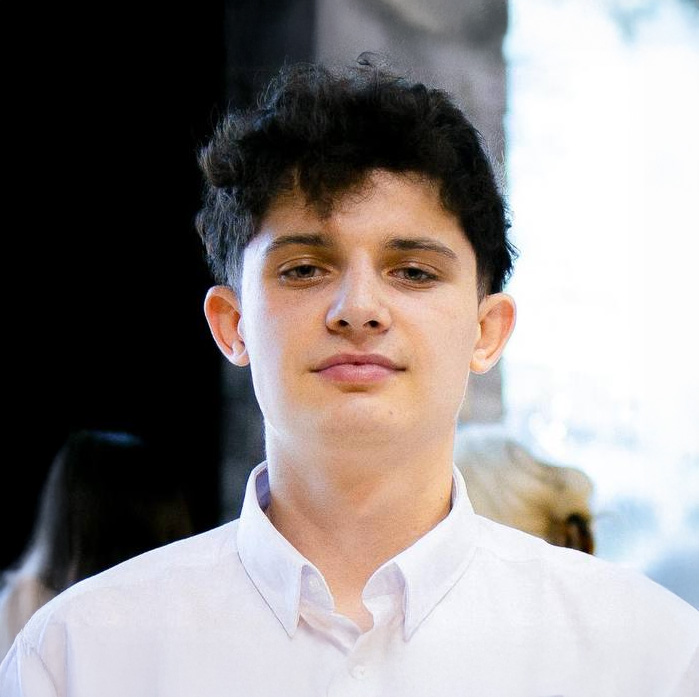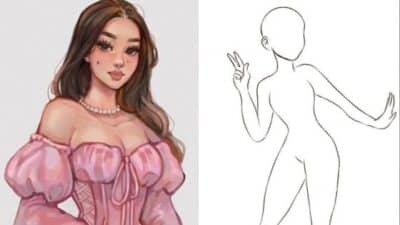Chicano art drawings blend intricate linework, cultural symbolism, and powerful storytelling to reflect the experiences and identity of Mexican-American communities. You will find in Chicano art a unique combination of traditional motifs, urban influences, and personal narratives, making each piece both visually striking and deeply meaningful. From classic lowrider imagery to expressive script lettering, these drawings have evolved into a style that continues to resonate in contemporary art, tattoo design, and street culture.
Today, artists use a range of techniques—pencil, ink, and digital tools—to create these images, adapting time-honored themes for new audiences. Whether you are looking for inspiration, learning techniques, or curious about how Chicano drawings are used in various creative projects, exploring this art form offers insight into a rich visual tradition.
Key Takeaways
- Chicano art drawings emphasize cultural identity and storytelling.
- Artists use both traditional techniques and digital tools in their work.
- These drawings are popular in art, tattoos, and digital marketplaces.
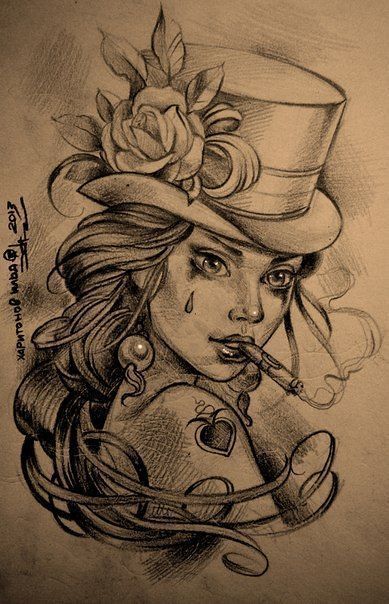
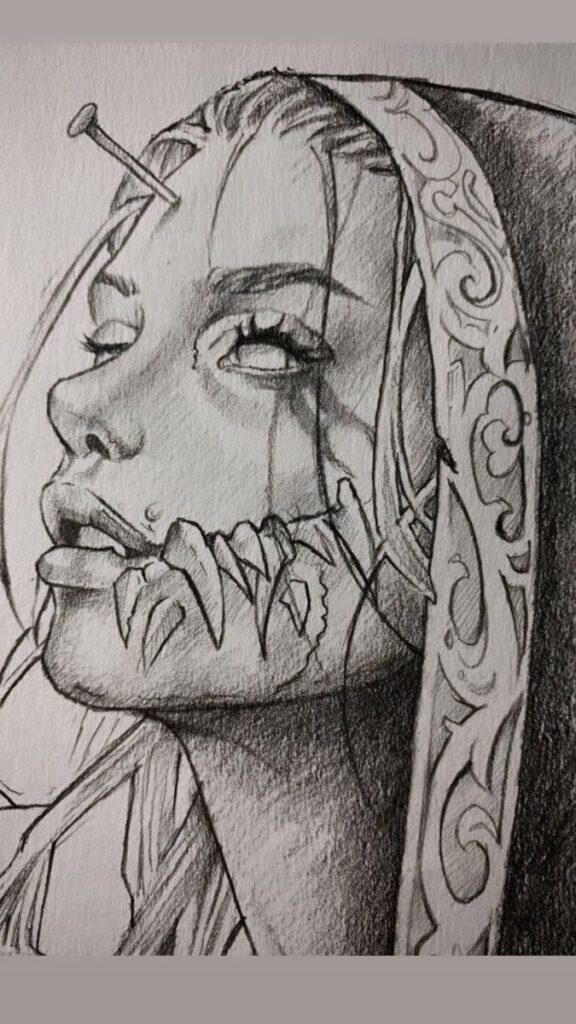
Foundations of Chicano Art Drawings
Chicano art drawings express identity, social struggle, and community heritage through intricate visuals and symbolism. Influenced by Latino experiences and historical movements, this art form is shaped by both collective activism and individual creativity.
Defining Chicano Art
Chicano art is rooted in the Mexican-American experience, serving as a visual language for cultural, social, and political expression.
You’ll see detailed linework and bold imagery reflecting daily life, traditions, and resistance. Symbolism is central—elements like lowriders, La Virgen de Guadalupe, and barrio landscapes appear often, telling stories of pride and struggle.
Chicano art drawings thrive in many media, from murals to sketches and even digital works. Artists use these forms not just for aesthetic purposes but also to make statements about race, migration, and identity.
Historical Influence and Cultural Impact
Chicano art emerged during the Chicano Movement of the 1960s and 1970s, when Mexican-Americans fought for rights and visibility.
Murals became a leading form, covering urban walls and public spaces with political messages and community stories. The influence of muralism, especially from artists like Diego Rivera, played a part in shaping the medium and content.
You’ll notice that Chicano artists often engage directly with Latino heritage, blending Indigenous and Mexican motifs. These drawings act as both protest and celebration, shaping how Latino culture is represented in the United States.
Prominent Chicano Artists
The field includes influential figures who have defined and expanded the boundaries of Chicano art.
Carlos Almaraz and Frank Romero are key names associated with the Los Angeles-based collective Los Four. Their work combines vivid colors and everyday cityscapes, highlighting the urban Latino experience.
Their drawings and murals frequently address personal as well as community narratives. By focusing on local neighborhoods and cultural icons, these artists have elevated Chicano art from a grassroots movement to recognition in galleries and museums across the nation.

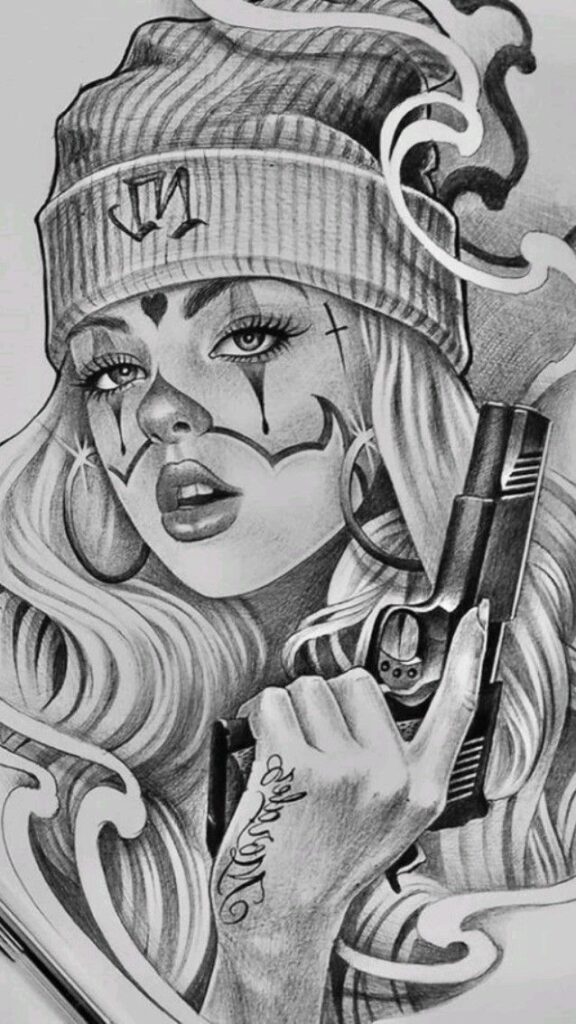
Techniques and Styles in Chicano Art Drawings
Chicano art drawings are distinguished by their use of specific tools, detailed pencil techniques, and expressive visual styles. These works capture themes of identity, culture, and community using both classic and innovative approaches to drawing.
Pencil Drawings and Sketches
Many Chicano artists rely on pencil as their primary medium, allowing for precision, subtle shading, and expressive line work. Pencil sketches often serve as the foundation for more complex pieces or as finished art in their own right.
You can observe the use of varied line thickness, which enhances depth and emphasizes key features. Artists employ shading techniques like cross-hatching and blending to create dramatic contrasts and smooth gradients.
Details, such as fine facial features or tattoo patterns, are rendered with careful pencil strokes. Some artists prefer graphite on heavyweight paper for crispness and durability. Quick sketches or larger, highly detailed pieces often reflect the artist’s connection to personal narratives and local culture.
Unique Artistic Styles
Chicano art drawings feature a blend of traditional and contemporary artistic styles. Common motifs include lowriders, script lettering, and “smile now, cry later” theatrical masks.
Color composition varies: some works use only monochrome or grayscale, while others incorporate vivid colors for emphasis or symbolic meaning. Stylized script and bold outlines are used to frame figures and highlight important elements.
Symbolism in imagery is crucial. You will often see recurring themes, like roses, urban landscapes, and religious icons, rendered in ways that showcase both individuality and communal experience. This fusion of recognizable motifs with personal touches gives Chicano art its distinctive visual impact.
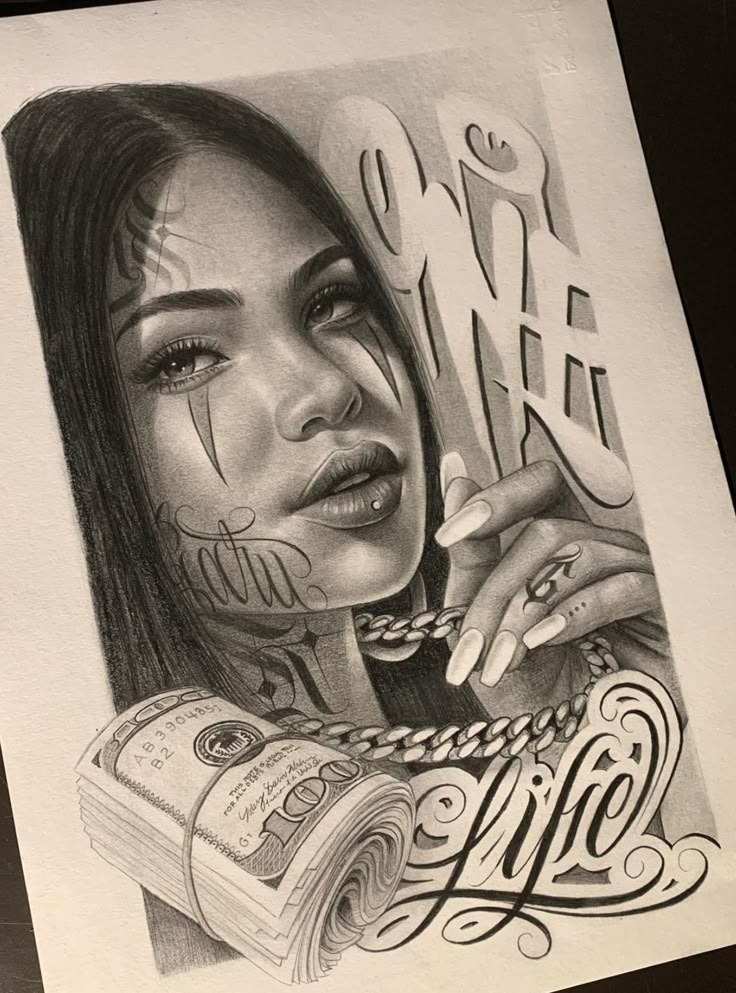

Visual Elements and Digital Adaptations
Chicano art drawings frequently emphasize sharp lines, iconic symbolism, and a vivid sense of color. The transition to digital formats raises key considerations for quality, usability, and authenticity in artwork presentation.
Image Orientation and Resolution
You encounter Chicano art in a range of image orientations. Horizontal (landscape) and vertical (portrait) layouts each highlight different aspects—murals might favor wide, sweeping scenes, while character portraits often use an upright format.
Resolution is central for digital reproduction. If you plan to print or enlarge Chicano art drawings, selecting a high-resolution image (300 DPI or higher) ensures clarity, reduces pixelation, and retains fine details. For social media and web display, lower resolutions suffice, but always consider minimum pixel dimensions (e.g., 1080px width for Instagram).
Consistent orientation and appropriate resolution help preserve the artwork’s original vibrancy and ensure details like linework and textural contrasts read cleanly across different devices and formats.
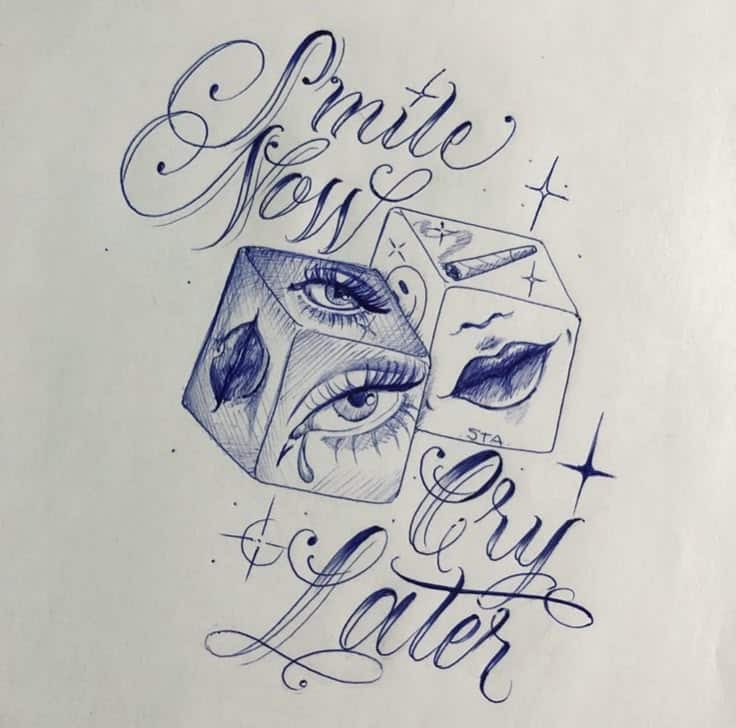

Vectors and Illustrations
Vectors offer unique versatility for Chicano art. Unlike raster images, vectors use mathematical paths to define shapes, making them scalable without loss of quality. This format works well for artwork featuring bold lines, distinct shapes, and flat areas of color, common features of Chicano drawings.
Using vectors, you can resize elements for use on posters, apparel, or murals without worrying about blurriness. Illustrations in vector format can also be easily edited—colors and shapes can be altered to adapt the original piece for different purposes. For community projects or collaborative designs, using vector-based files like SVG or AI supports efficient sharing and revision.
Vector illustrations also facilitate easy integration with digital platforms and print shops, ensuring the look and essence of Chicano art are retained.
AI Generated Content
AI-generated content is now part of the evolving Chicano art scene. With AI tools, you can create new variations or reinterpretations of traditional elements, generate references quickly, or experiment with themes before producing hand-drawn work.
You might use platforms that accept text prompts to produce sketches mirroring the bold lines and vibrant themes typical of Chicano art. However, it’s important to review AI output for accuracy—AI might miss subtle cultural details or symbols integral to authentic expression.
If you choose to post or use AI-generated Chicano art, it’s recommended to credit the creative tools and clarify what is AI-generated. This distinction helps promote transparency and respect for both traditional and digital artists.


Licensing, Usage, and Distribution
Chicano art drawings are often protected by copyright and governed by specific licensing terms when used or distributed. Understanding licensing can help you avoid legal issues and ensure fair use.
Royalty-Free and Exclusive Rights
Royalty-free licenses allow you to use Chicano art drawings for multiple purposes after a one-time fee. You do not pay ongoing royalties, but there are usually limits to how the images can be used. For example:
- Commercial products
- Marketing materials
- Digital platforms
Exclusive rights offer more control, letting only you—or people you authorize—use the drawing. This can help with branding and prevent the same artwork from appearing elsewhere. However, exclusivity usually costs more and often comes with negotiation directly with the artist or rights holder.
Licensors may also require proper attribution or restrict how the image is modified. Be sure to check the terms before purchasing or using any artwork.
Extended Licenses and Editorial Use
An extended license expands the permitted uses well beyond standard royalty-free terms. This often covers:
- Unlimited print runs
- Redistribution in digital templates
- Use in merchandise intended for resale
You may need an extended license for projects like mass-produced posters or inclusion in a product line. Fees are typically higher due to the broader scope.
Editorial use limits images to non-commercial contexts, such as news, education, or commentary. Editorial licenses don’t allow the image in advertisements or product packaging. If you plan to use Chicano art drawings for reporting, event coverage, or classroom instruction, look for clear editorial agreement terms. Always respect these boundaries to avoid copyright violations.
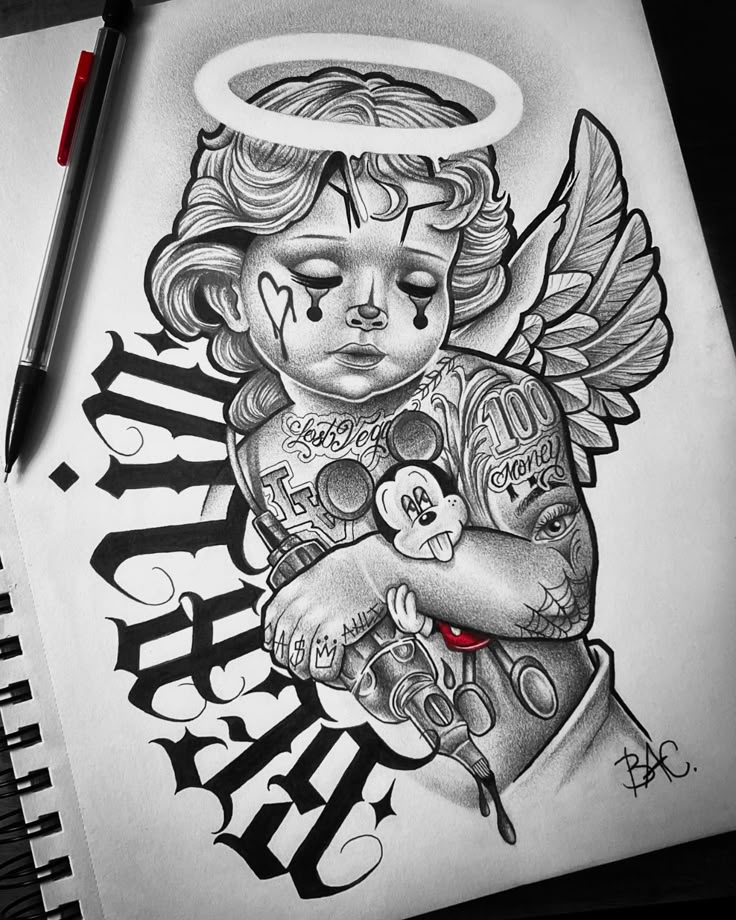

Popular Applications and Marketplace Trends
Chicano art drawings have become sought-after in both physical and digital spaces. From public murals to searchable collections on stock image sites, their presence shapes the cultural and commercial art landscape.
Posters and Murals
Posters and murals are central to how Chicano art drawings reach wider audiences. Murals, in particular, are visible in public spaces, schools, and community centers across cities with strong Mexican-American communities.
These artworks often mix traditional iconography with bold graffiti styles. You’ll notice themes of social justice, heritage, and local history depicted in vivid colors.
Collectors and fans purchase posters for home decor, making Chicano designs accessible and affordable. Local events and festivals frequently commission artists to create limited-run prints and posters, which helps support artists and broaden exposure.
| Application | Significance |
|---|---|
| Murals | Public identity, storytelling |
| Posters | Widespread appeal, collectability |
Chicano murals are sometimes used to revitalize neighborhoods, celebrate cultural pride, and communicate political messages. Posters can be found both at community events and for sale through online and gallery outlets.
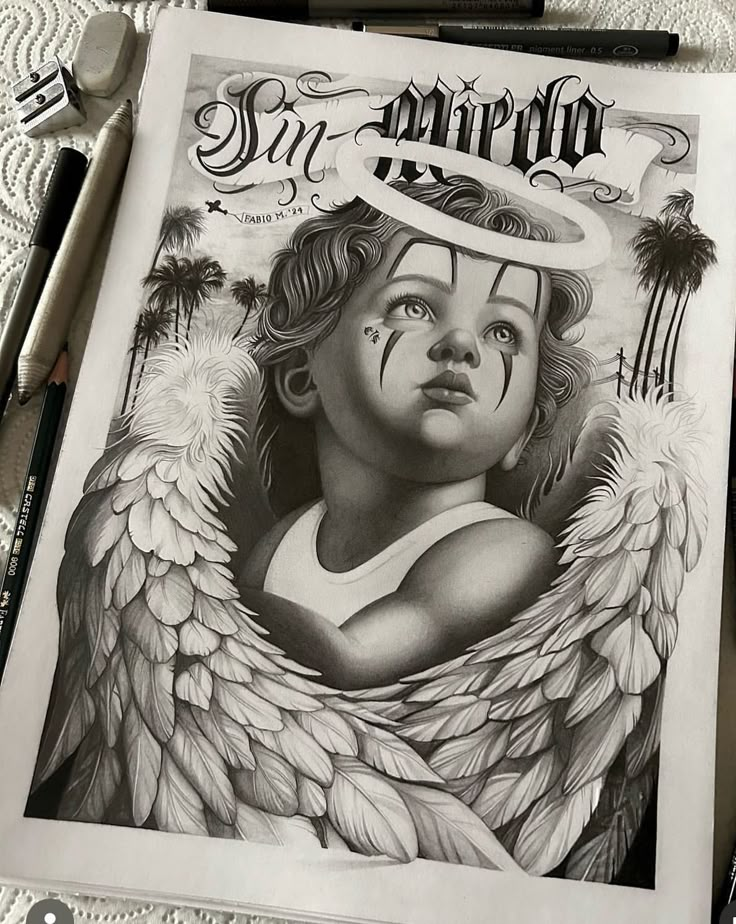

Online Platforms and Dreamstime
Online platforms such as Dreamstime allow you to license, purchase, and distribute digital versions of Chicano art drawings. These marketplaces increase the visibility of artists beyond their local regions.
Dreamstime and similar sites categorize Chicano artwork with detailed tags. This lets you search for specific styles, motifs, or artists. Many of these platforms offer flexible licenses, making it easier for educators, designers, and businesses to legally use Chicano-inspired imagery.
The online environment also makes it possible for emerging artists to reach international buyers. Digital files are available instantly for personal or commercial projects, boosting both accessibility and demand for contemporary Chicano art.
Safe Search Filters in Art Platforms
Safe search filters have become standard features across stock art platforms and digital galleries. You can use these filters to remove explicit or sensitive content when browsing Chicano art drawings.
Platforms such as Dreamstime rely on these tools to ensure users, including students and families, have positive and appropriate experiences. Filters can be adjusted or turned off based on account settings, giving you control over the content you view.
Safe search also helps maintain the accessibility of public and educational resources. This ensures a wider audience can engage with Chicano art without exposure to unwanted material. For artists, these filters help broaden their reach, as artwork passes more easily into schools and family-friendly settings.
- 176shares
- Facebook0
- Pinterest176
- Twitter0
